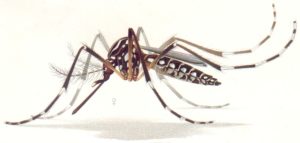
The TWiV pro-vaxxers reveal viruses that infect endangered wild salmon, and how iron in host serum modulates dengue virus acquisition by mosquitoes.
Hosts: Vincent Racaniello, Dickson Despommier, Alan Dove, and Brianne Barker
Click arrow to play
Download TWiV 569 (67 MB .mp3, 110 min)
Subscribe (free): iTunes, Google Podcasts, RSS, email
Become a patron of TWiV!
Links for this episode
- New viruses that infect endangered wild salmon (eLife) 17:46
- Host serum iron modulates dengue virus acquisition by mosquitoes (Nat Micro) 40:07
- Letters read on TWiV 569 6:05, 1:11:46
- Timestamps by Jolene. Thanks!
Weekly Science Picks 1:21:14
Brianne – Retraction of new CCR5/lifespan study
Alan – Nomad Press illustrated science books, and illustrator Lex Cornell
Dickson – RARE: Creatures of the Photo Ark
Vincent – The Odyssey of Eradication by Thomas Abraham
Listener Picks
Justin – Mass spec pen
Mark – What really brought down the Boeing 737 Max?
Intro music is by Ronald Jenkees.
Send your virology questions and comments to [email protected]


On the Mass Spec Pen, Waters already sells this device, not yet approved for clinical use… https://www.waters.com/webassets/cms/library/docs/720005418en.pdf
It uses a LASER and a vacuum line to pull in fragments of cellular molecules monitoring for key markers of the specific type of cancer.
Dear TWiVaxxers,
I’m a fist-time writer to TWiV, although I’ve been on the verge of writing many times when your podcast intersected with my world. I listen to Twiv from both ends: the most current episode and then the earliest one I haven’t heard yet. The hope is that I’ll eventually hear them all, but I only listen while driving in the car, and my commute is about 7 minutes, 10 minutes with terrible traffic (I know that this might make Vincent a bit jealous), and I listen to TWiP and TWiM as well.
This time, your episode got really close to my universe, so I wanted to share. I grew up in the small country Suriname on the northeast coast of South America, I currently live in Gainesville, FL where I teach Microbiology at the local college.
This week’s intersection with my life relates to the dengue/malaria discussion and the idea that one would need a malaria-free area where dengue occurs.
As a teenage, I contracted dengue in Suriname (I can attest that the moniker “breakbone fever” is well-deserved). Growing up in Suriname, malaria was not a problem in the coastal areas (about 10% of the country) where 90% of the population lives, but if you wanted to visit the interior in the South, you needed prophylaxis against malaria. As far as I know, dengue fever is still a problem throughout the country.
A couple of years ago, while visiting family, I talked to a researcher at the medical school in Suriname, and she mentioned that a joint research program with the CDC on malaria in the interior Suriname was canceled because malaria is virtually eradicated. In fact, prophylaxis is no longer offered to travelers going into the interior, it appears to be more effective to simply treat the very few cases that occur.
In my opinion, eradication for all practical purposes of malaria in a tropical rain forest that is the closest thing to heaven that mosquitoes ever encounter is an incredible feat requiring true dedication to the cause.
So there you have it, an area that has no significant incidence of malaria, but does have dengue…..
Iron fertilization: As I remember from Marine Chemistry it is a lack of divalent iron (Fe2+) in the ocean. It is much more bioavailable than the more common trivalent iron (Fe3+). I would like to know the reasoning behind calling you crazy to say iron-fertilization works. (But let someone else than me do the talking.) Iron sulphate, which you mention, is most often a divalent compund., and an easily soluble salt.